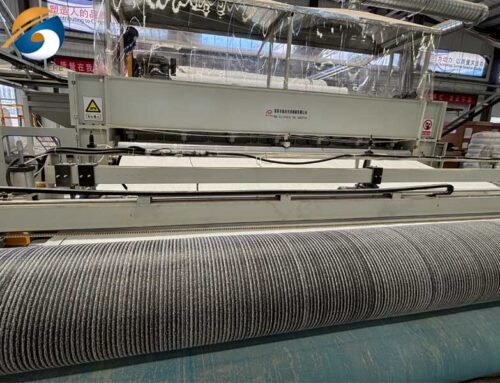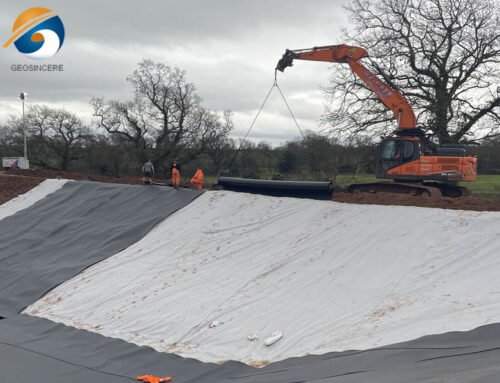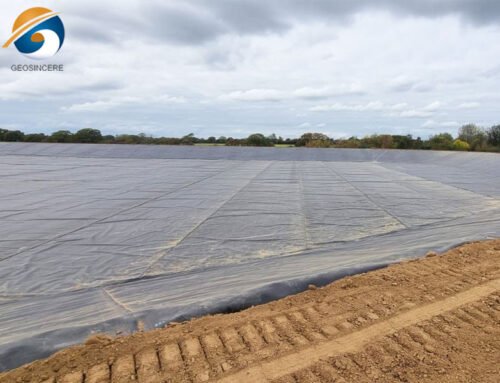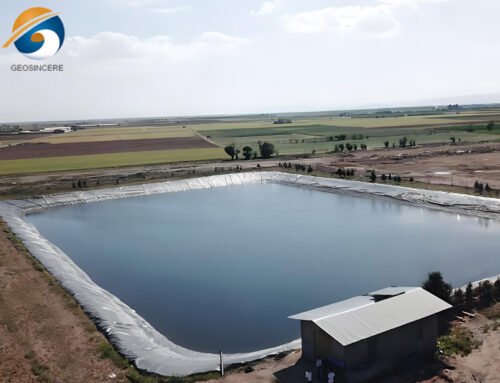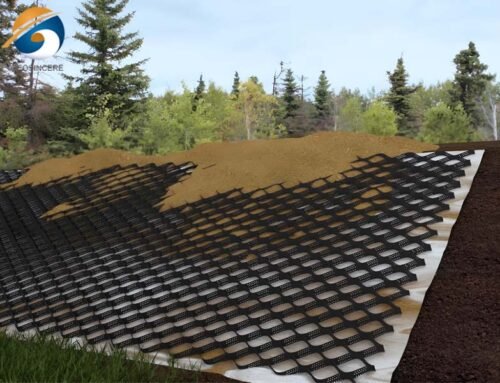Beneath the surface of robust roads, stable slopes, resilient railways, and durable erosion control lies a critical, yet often overlooked, technology: the geocell. These three-dimensional, honeycomb-like cellular confinement systems represent a paradigm shift in geotechnical engineering, transforming weak soils into high-performance structural elements. Choosing the right geocell isn’t merely a procurement decision; it’s a fundamental engineering choice impacting project longevity, cost-effectiveness, safety, and environmental sustainability. This comprehensive guide delves deep into the critical factors, technical specifications, and application nuances you must consider to select the best geocell solution for your specific challenge.
1. Understanding Geocell Fundamentals
At its core, a geocell is a polymeric (or sometimes textile-based) web of connected strips or sheets, expanded on-site to form a flexible, three-dimensional cellular structure. Once filled with compacted soil, aggregate, sand, or concrete, these cells create a mechanically stabilized layer (MSL) that:
- Confines Infill: Prevents lateral movement of infill material under load, significantly enhancing its shear strength and bearing capacity.
- Distributes Loads: Spreads vertical loads over a wider area, reducing pressure on the underlying subgrade and minimizing settlement.
- Provides Erosion Control: Protects slopes and channels from surface runoff and wind erosion by anchoring soil and vegetation.
- Improves Drainage: Facilitates controlled drainage within the infill material, preventing water buildup that weakens subgrades.
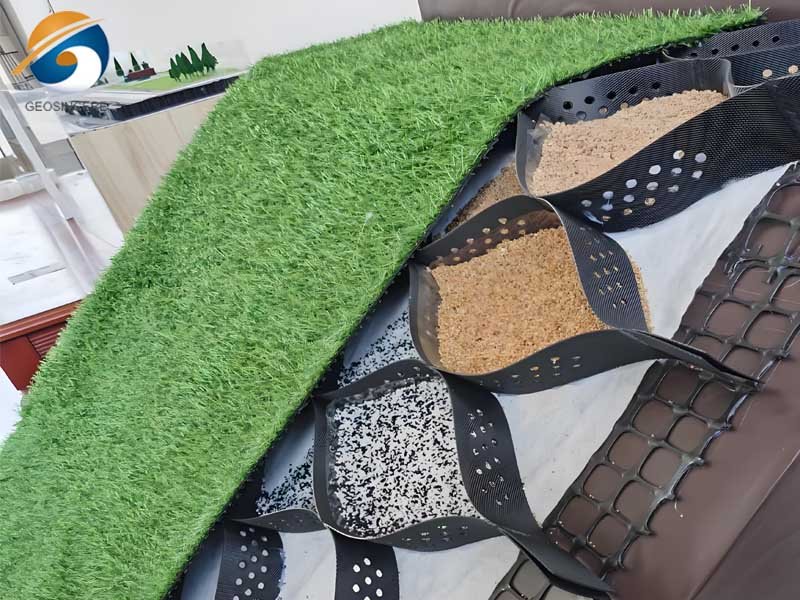
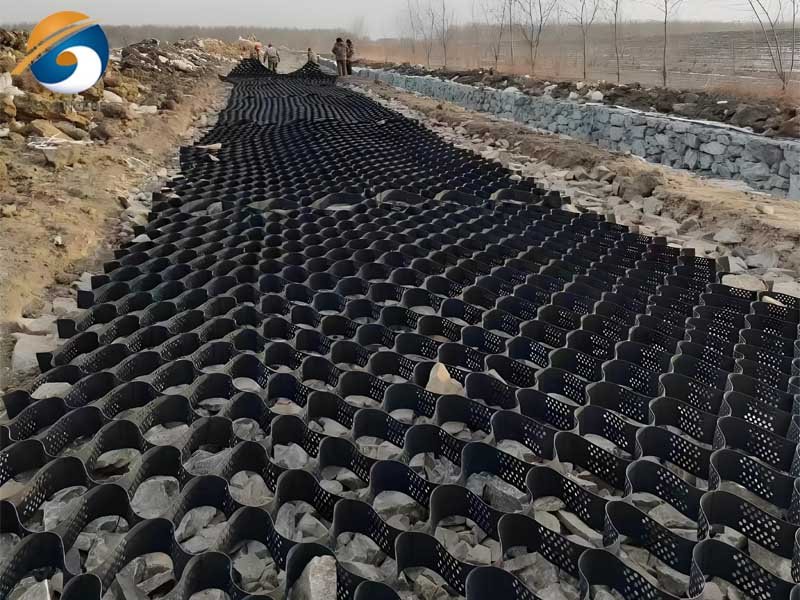
2. The Crucial Selection Criteria: Decoding Best Geocell Performance
Selecting the “best” geocell is inherently application-specific. A system ideal for a heavy-haul access road on soft clay will differ significantly from one designed for a vegetated slope face or a channel lining. Here’s the essential framework for evaluation:
2.1 Best Geocell – Material Composition & Properties: The Foundation of Durability
2.1.1 Polymer Type:
HDPE (High-Density Polyethylene): The most common. Offers excellent chemical resistance, UV stability (with additives), and durability. Best for general load support, erosion control, and earth retention. Good balance of strength and flexibility.
PP (Polypropylene): Often used where flexibility is paramount or in lower-temperature environments. Can be more flexible than HDPE but generally has lower UV resistance and long-term creep resistance compared to well-formulated HDPE. Common in lightweight applications or temporary installations.
Polyester (PET) Geotextile-Based: Woven or non-woven geotextiles bonded into cells. Excellent for vegetation establishment on slopes (provides root reinforcement), filtration, and separation. Less suitable for heavy load-bearing without substantial infill. High tensile strength.
Novel Polymeric Alloys (NPA) / Enhanced Polymers: Engineered blends offering superior properties like higher stiffness, improved UV resistance, better low-temperature performance, or enhanced resistance to specific chemicals. Often used in demanding, high-load, or critical infrastructure applications.
2.1.2 UV Stabilization (Critical!)
Exposure to ultraviolet radiation degrades polymers. Look for geocells with carbon black masterbatch (minimum 2-2.5%) uniformly distributed throughout the polymer, not just coated on the surface. Verify guaranteed UV resistance lifespan (e.g., 20+ years) backed by testing standards like ASTM D7238 or ISO 4892.
2.1.3 Additives:
Antioxidants prevent oxidative degradation. Other additives might enhance specific properties like flame retardancy or color.
2.1.4 Creep Resistance:
The tendency of polymer to slowly deform under constant load over time. Crucial for long-term structural integrity under sustained loads. HDPE generally has better creep resistance than PP. Look for performance data under sustained load testing (e.g., ISO 13426 or similar).
2.2 Best Geocell – Structural & Physical Specifications: Measuring Performance
2.2.1 Seam Strength (Peel & Shear):
The weakest point is often the weld or connection between strips. Peel strength measures resistance to separation perpendicular to the seam. Shear strength measures resistance to sliding parallel to the seam. ASTM D882 (Tensile) and modified tests like ISO 13426 are relevant. Demand high minimum values (e.g., > 200 N/50mm peel, > 300 N/50mm shear) suitable for your load requirements.
2.2.2 Tensile Strength (Strip/Sheet):
Strength of the individual material in the machine and cross-machine directions (MD & CMD). While important, seam strength is often the limiting factor. ASTM D6693 (for polymers) or D4595 (for geotextiles).
2.2.3 Perforations:
Essential for drainage and root penetration in vegetated applications. Size, pattern, and density impact drainage rate and infill retention. Ensure perforations don’t compromise structural integrity.
2.2.4 Cell Size (Depth & Diameter):
Determines the volume of confinement and influences the depth of the load-distributing mattress. Deeper cells (150mm, 200mm, 300mm+) are needed for heavier loads or weaker subgrades. Cell diameter affects infill particle size compatibility.
2.2.5 Cell Geometry:
Rhomboidal shapes often provide better interlock with angular infill compared to circular shapes. Weld spacing density also impacts confinement efficiency.
2.2.6 Aperture Stability:
The ability of the cell walls to maintain their shape and resist buckling under infill pressure and load. Related to material stiffness and weld strength.
3. Application Requirements: Matching Best Geocell to Function
3.1 Best Geocell – Primary Function:
- Load Support (Roads, Working Platforms, Foundations): Requires high seam strength, excellent creep resistance, UV stability, and appropriate cell depth/stiffness. HDPE or NPA excels.
- Slope Protection & Erosion Control: Needs good confinement for soil/vegetation, UV stability, and potentially high tensile strength (geotextile types) for anchoring. Perforations are key for drainage/vegetation. HDPE or geotextile types are common.
- Earth Retention (Gravity Walls, Embankments): Demands exceptionally high seam and tensile strength, stiffness, and long-term durability. Deep cells and robust polymers (HDPE, NPA) are essential.
- Channel Protection: Requires durability against flowing water, abrasion resistance, and secure anchoring. HDPE is predominant.
- Tree Root Protection: Needs moderate strength and perforations for root penetration and water exchange. Geotextile or lightweight HDPE.
- Design Loads: Quantify the expected traffic loads (ESALs – Equivalent Single Axle Loads), static loads, or hydraulic forces. This drives the required geocell strength, stiffness, and infill specifications.
3.2 Best Geocell – Subgrade Conditions:
The strength (CBR – California Bearing Ratio) and nature (clay, silt, sand, peat) of the underlying soil dictate the necessary improvement factor the geocell layer must provide.
3.3 Best Geocell – Environmental Exposure:
UV intensity, temperature extremes, chemical exposure (e.g., de-icing salts, hydrocarbons, acids/alkalis), biological factors, and potential fire risk influence material selection.
3.4 Best Geocell – Infill Material:
The geocell must effectively confine the chosen infill (soil, aggregate type/size, sand, concrete). Cell size must accommodate infill particle size. Angular aggregate provides the best mechanical interlock.
3.5 Best Geocell – Design Life:
Temporary construction mat vs. 50+ year permanent infrastructure? Impacts required durability (UV, chemical, creep).
4. Installation Considerations: Ensuring Performance in the Field
- Ease of Expansion: Can the panels be expanded easily and safely by the available crew? Do they lock open reliably?
- Connection System: How are panels connected together? Pin-and-loop, J-hook, zip-tie, or welded systems vary in speed, security, and strength. Ensure the system provides seamless continuity.
- Anchoring: Critical for slopes and channels. Adequate anchors (steel pins, stakes, deadman anchors) of correct length and spacing are essential and often specified by the design engineer.
- Infilling & Compaction: Proper placement and compaction of infill within each cell is paramount. Poor compaction negates the benefits. Method (manual, mechanical) depends on access and scale.
5. The Triple-A Evaluation Framework: Application, Attributes, Assurance
Synthesize the above factors using this decision-making framework:
- Application: Precisely define the project’s geotechnical challenge (e.g., “stabilize soft subgrade for 10-tonne forklift traffic,” “protect 45-degree slope from erosion with vegetation,” “create durable access road over peat”).
- Attributes: Based on the Application, list the required geocell attributes (e.g., HDPE, 200mm depth, min. peel strength 250 N/50mm, UV 20yr, perforated, high creep resistance).
- Assurance: Demand proof! Require comprehensive, certified test reports (from accredited labs like ISO 17025) for all claimed properties (seam strength, tensile, UV, creep, carbon black content). Reputable manufacturers provide these readily. Verify warranties align with claimed lifespan.
6. Beyond Specifications: The Value Proposition
While initial cost is a factor, the true value lies in lifecycle cost savings and risk mitigation:
- Reduced Infill Requirements: Achieve equivalent performance with less imported aggregate.
- Faster Construction: Geocells often enable construction over weak soils without lengthy soil replacement or surcharging.
- Extended Service Life: Durable geocells significantly reduce maintenance costs and downtime.
- Environmental Benefits: Minimize excavation, reduce aggregate quarrying/transport, facilitate vegetation growth, and protect soil/water resources.
- Accessibility: Enable construction in previously inaccessible or challenging terrain.
- Predictable Performance: Engineered systems provide reliable, quantifiable improvement.
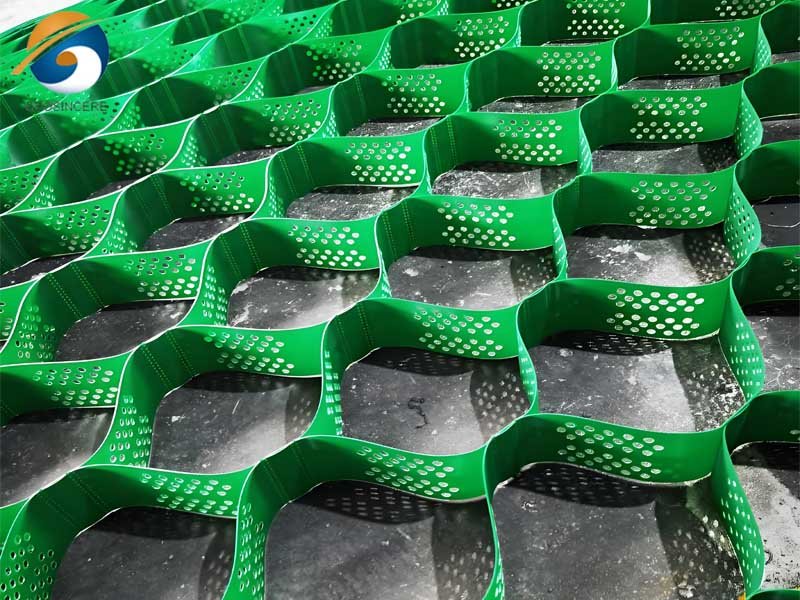
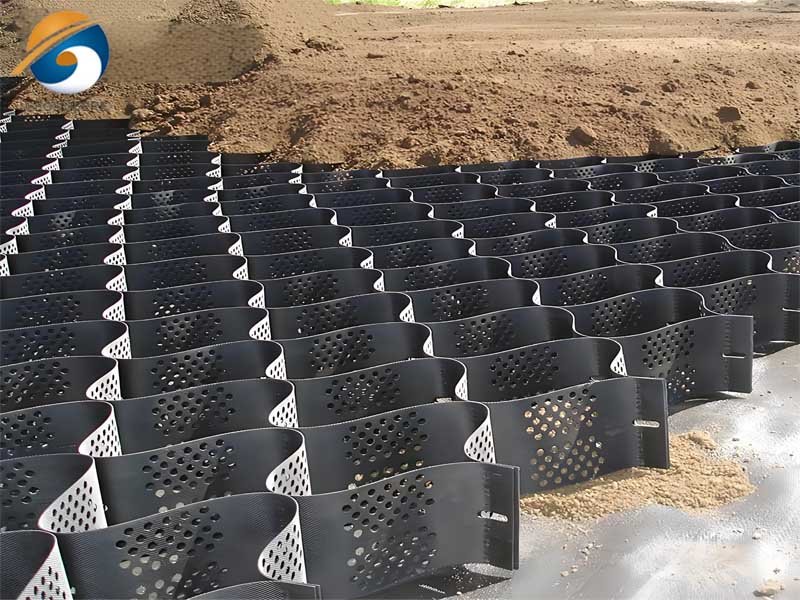
7. Future Trends: Innovation in Cellular Confinement
The geocell market continues to evolve:
- High-Performance Polymers: Development of polymers with even greater strength, stiffness, and environmental resistance.
- Sustainable Materials: Exploration of recycled content and bio-based polymers (though performance and longevity remain key hurdles).
- Smart Geocells: Integration of sensors for monitoring strain, temperature, or moisture within the structure.
- Hybrid Systems: Combining geocells with other geosynthetics (geogrids, geotextiles) for optimized performance in complex scenarios.
- Advanced Manufacturing: More consistent welding/seaming techniques and innovative cell geometries.
8. Conclusion: Choosing Wisely for Lasting Success
Selecting the best geocell is a critical engineering decision demanding a thorough, multi-faceted analysis. There is no universal “best” – only the optimal solution for your specific application, site conditions, and performance requirements. Prioritize proven performance over price alone. Scrutinize material properties, demand verifiable test data, understand the installation requirements, and partner with reputable manufacturers and experienced engineers.
By rigorously applying the principles outlined in this guide – focusing on the Material Science, Structural Performance, Application Specificity, and Installation Integrity – you empower yourself to harness the full potential of cellular confinement technology. The result will be a robust, cost-effective, and sustainable solution that delivers reliable performance for decades, forming the resilient foundation upon which successful infrastructure is built. Invest the time upfront in meticulous selection; the ground you stabilize will thank you for years to come.If you have any questions, please feel free to contact us GEOSINCERE.

